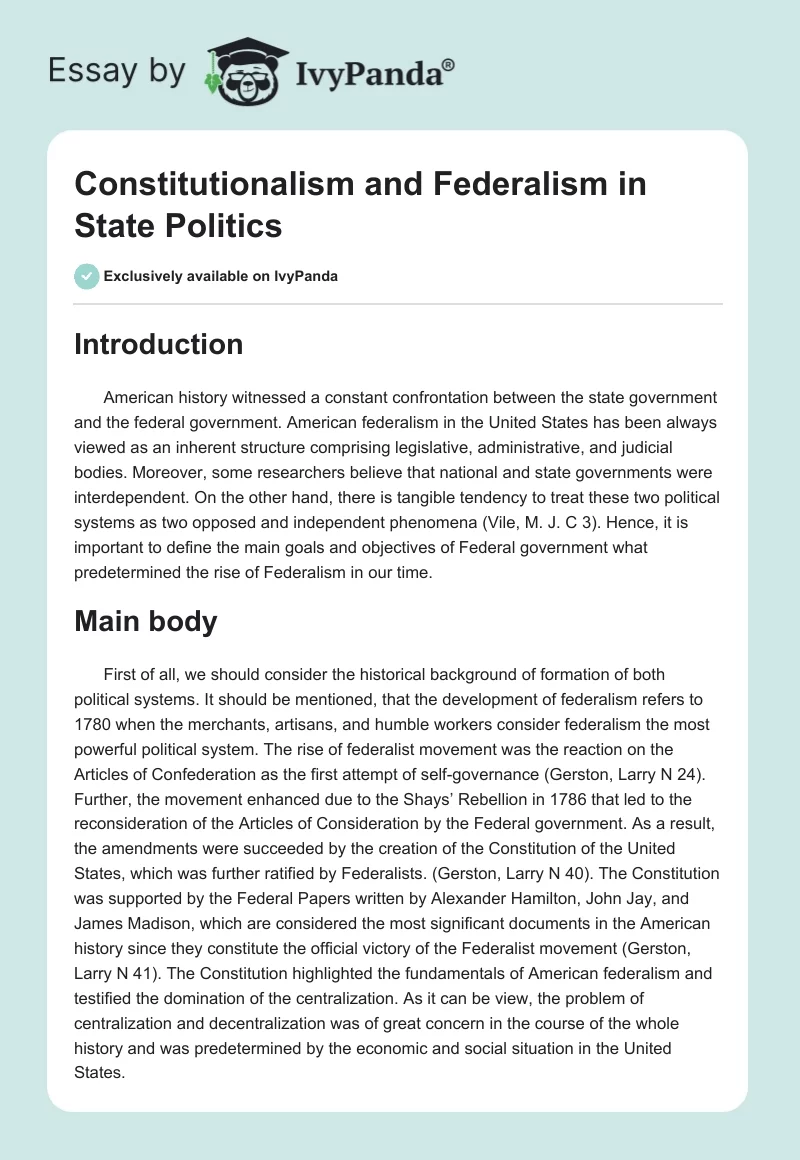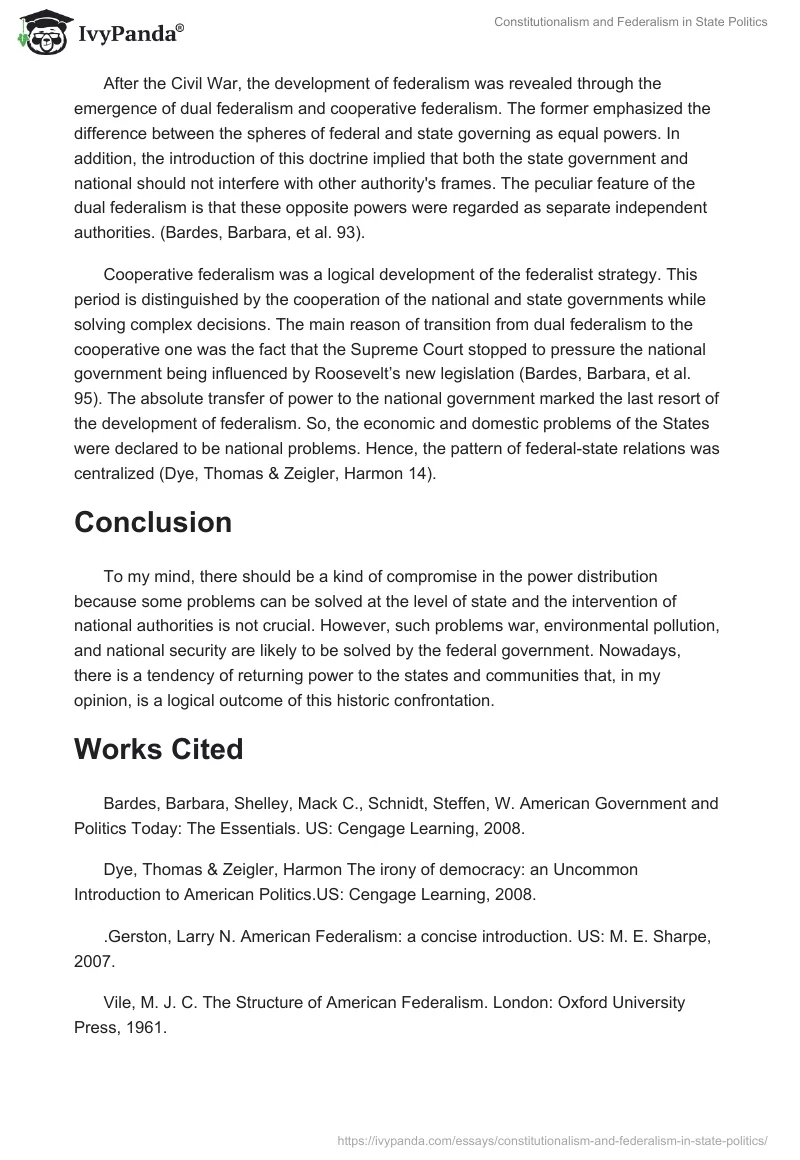Introduction
American history witnessed a constant confrontation between the state government and the federal government. American federalism in the United States has been always viewed as an inherent structure comprising legislative, administrative, and judicial bodies. Moreover, some researchers believe that national and state governments were interdependent. On the other hand, there is tangible tendency to treat these two political systems as two opposed and independent phenomena (Vile, M. J. C 3). Hence, it is important to define the main goals and objectives of Federal government what predetermined the rise of Federalism in our time.
Main body
First of all, we should consider the historical background of formation of both political systems. It should be mentioned, that the development of federalism refers to 1780 when the merchants, artisans, and humble workers consider federalism the most powerful political system. The rise of federalist movement was the reaction on the Articles of Confederation as the first attempt of self-governance (Gerston, Larry N 24). Further, the movement enhanced due to the Shays’ Rebellion in 1786 that led to the reconsideration of the Articles of Consideration by the Federal government. As a result, the amendments were succeeded by the creation of the Constitution of the United States, which was further ratified by Federalists. (Gerston, Larry N 40). The Constitution was supported by the Federal Papers written by Alexander Hamilton, John Jay, and James Madison, which are considered the most significant documents in the American history since they constitute the official victory of the Federalist movement (Gerston, Larry N 41). The Constitution highlighted the fundamentals of American federalism and testified the domination of the centralization. As it can be view, the problem of centralization and decentralization was of great concern in the course of the whole history and was predetermined by the economic and social situation in the United States.
After the Civil War, the development of federalism was revealed through the emergence of dual federalism and cooperative federalism. The former emphasized the difference between the spheres of federal and state governing as equal powers. In addition, the introduction of this doctrine implied that both the state government and national should not interfere with other authority’s frames. The peculiar feature of the dual federalism is that these opposite powers were regarded as separate independent authorities. (Bardes, Barbara, et al. 93).
Cooperative federalism was a logical development of the federalist strategy. This period is distinguished by the cooperation of the national and state governments while solving complex decisions. The main reason of transition from dual federalism to the cooperative one was the fact that the Supreme Court stopped to pressure the national government being influenced by Roosevelt’s new legislation (Bardes, Barbara, et al. 95). The absolute transfer of power to the national government marked the last resort of the development of federalism. So, the economic and domestic problems of the States were declared to be national problems. Hence, the pattern of federal-state relations was centralized (Dye, Thomas & Zeigler, Harmon 14).
Conclusion
To my mind, there should be a kind of compromise in the power distribution because some problems can be solved at the level of state and the intervention of national authorities is not crucial. However, such problems war, environmental pollution, and national security are likely to be solved by the federal government. Nowadays, there is a tendency of returning power to the states and communities that, in my opinion, is a logical outcome of this historic confrontation.
Works Cited
Bardes, Barbara, Shelley, Mack C., Schnidt, Steffen, W. American Government and Politics Today: The Essentials. US: Cengage Learning, 2008.
Dye, Thomas & Zeigler, Harmon The irony of democracy: an Uncommon Introduction to American Politics.US: Cengage Learning, 2008.
.Gerston, Larry N. American Federalism: a concise introduction. US: M. E. Sharpe, 2007.
Vile, M. J. C. The Structure of American Federalism. London: Oxford University Press, 1961.


